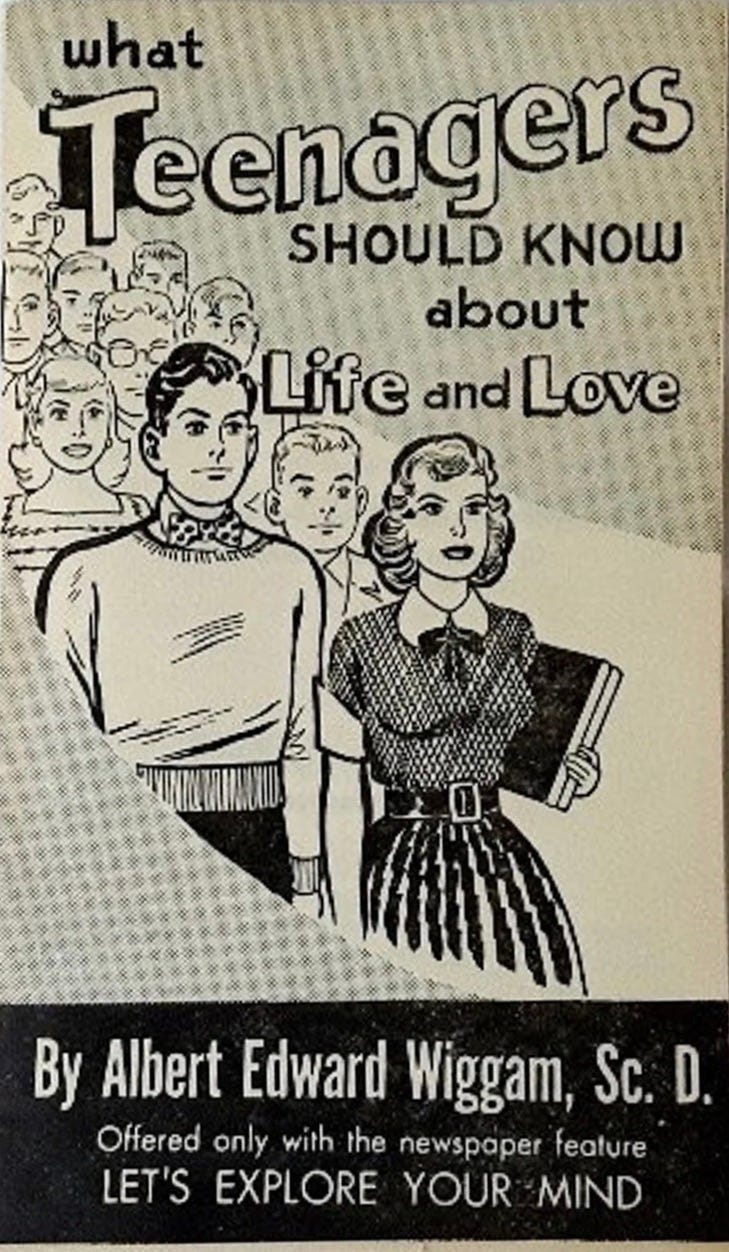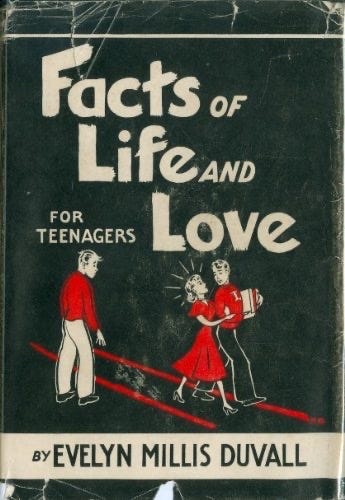Dreams
Sex Education Circa 1953 or 1954
Guilt
AS TIME PASSED, the snapshot stayed in my mind. I could recover the picture of myself sitting on the dock whenever I wished, just by closing my eyes and willing it to appear. …
I told her, years before, about a dream that I had had while I tossed restlessly during a bout with one of the childhood diseases, something that made me feverish.
It was a dream in which nothing happened. There was a featureless landscape; it might have been a desert or tundra. In the foreground was a post, and from the post a line of some kind dangled. …
… during this restless and feverish time I had, by assembling in a careful, step-by-step, logical fashion the few facts I knew, the rumors, assertions, wild claims, and flights of fancy I had heard, and the mystifying hints in a pamphlet my mother had left in my room, arrived at a clear theoretical understanding—which in form resembled the instruction sheets that came with the model airplanes I had become fond of building, an insert-part-A-into-part-B understanding—of what men and women did when they “went to bed together,” and had discovered, by way of looking for an experimental method to test my theory, masturbation.Little Follies, “Call Me Larry”
This could have been the pamphlet that Peter’s mother left in his room. It is not the pamphlet that Peter’s mother left in his room, but it could have been the pamphlet that Peter’s mother left in his room. (However, Peter says that he was “barely adolescent,” when he first began reading the Larry Peters books. How old was he? Eleven? Twelve? Would his mother have given him a pamphlet intended for teenagers?)
Or it could have been this one.
One of Babbington’s docks (from the post a line of some kind dangles):
Currently on the coffee table:
One of the plates from the atlas, “Höhen der alten und neuen Welt,” a drawing in pencil, ink, and watercolor on paper by Johann Wolfgang von Goethe:
The text accompanying the drawing explains its origin:
In 1807, when Goethe received [Alexander von] Humboldt’s Essai sur la géographie des plantes, it was missing the physical table meant to illustrate it; the plate arrived on May 5 of that year. By that time, Goethe had already produced his own illustration. He recounted its genesis in a letter of thanks to Humboldt, dated April 3: “I have read the volume several times with much interest and I immediately, lacking the promised transversal map, imagined a landscape myself on a scale of 4,000 toises [the toise was a unit of measure that originated in pre-revolutionary France, approximately equal to 1949.03631 mm] per page; the heights of the European and American mountains are depicted beside one another; my image includes the snow and vegetation limits as well.” Goethe sent Humboldt a copy of his sketch, which he mentions having wanted to show “to our dear reigning Duchess, the princess and several other ladies” at the same time that he presented his own work.
As attested by “Souvenirs des causeries de Goethe,” Goethe had sent Humboldt’s reflections to these ladies as early as April 1, and had shown them his own sketch at that time, something which elicited a lively interest as demonstrated by the reaction of Charlotte von Schiller (1766–1826): “. . . in an invented landscape, G has created an ingenious representation of various peaks and specifies the height of the mountains of both the old and new continent.”
The lower right edge of the sketch includes a crocodile marking the sea level. Several individuals are also represented: to the left of the summit of Mont Blanc is the naturalist Horace-Bénédict de Saussure (1740–1799), to the right, on the slopes of Chimborazo, Alexander von Humboldt, and in the sky a drawing of Louis Joseph Gay-Lussac’s balloon.Jean-Christophe Bailly, Jean-Marc Besse, Philippe Grand, and Gilles Palsky, An Atlas of Geographical Wonders from Mountaintops to Riverbeds
[more to come on Wednesday, February 23, 2022]
Have you missed an episode or two or several?
You can begin reading at the beginning or you can catch up by visiting the archive or consulting the index to the Topical Guide.
You can listen to the episodes on the Personal History podcast. Begin at the beginning or scroll through the episodes to find what you’ve missed.
You can ensure that you never miss a future issue by getting a free subscription. (You can help support the work by choosing a paid subscription instead.)
At Apple Books you can download free eBooks of “My Mother Takes a Tumble,” “Do Clams Bite?,” “Life on the Bolotomy,” “The Static of the Spheres,” “The Fox and the Clam,” “The Girl with the White Fur Muff,” and “Take the Long Way Home,” the first seven novellas in Little Follies.
You’ll find an overview of the entire work in An Introduction to The Personal History, Adventures, Experiences & Observations of Peter Leroy. It’s a pdf document.








